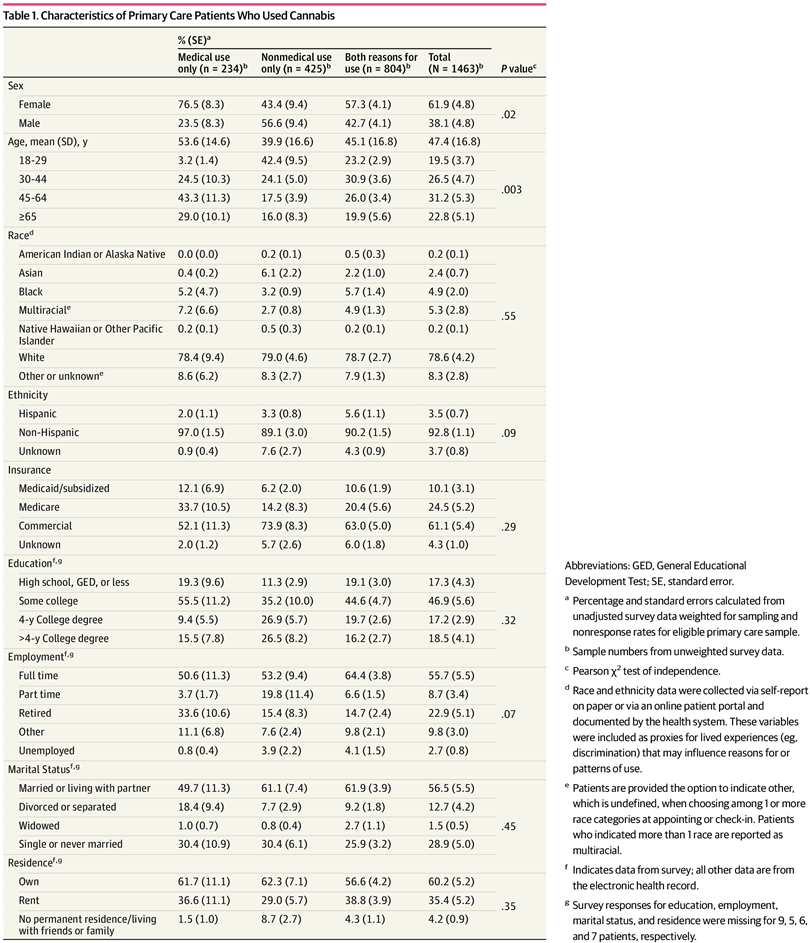Moderate and severe cases were more prevalent among patients who reported recreational use.
The cross-sectional study was 108,950 adult patients who completed routine cannabis screening from March 2019 to September 2019. Of those, 5,000 were selected for a confidential marijuana use survey using stratified random sampling for frequency of past-year use and race and ethnicity. Among 1,688 respondents, 1,463 reporting past 30-day cannabis use were included in the study.
Patient responses to the Composite International Diagnostic Interview-Substance Abuse Module for CUD, corresponding to Diagnostic and Statistical Manual of Mental Disorders, Fifth Edition CUD severity (0-11 symptoms) were categorized as any CUD (≥2 symptoms) and moderate to severe CUD (≥4 symptoms). Adjusted analyses were weighted for survey stratification and nonresponse for primary care population estimates and compared prevalence of CUD across reasons for cannabis use.

The 1,463 included primary care patients (weighted mean [SD] age, 47.4 [16.8] years; 748 [weighted proportion, 61.9%] female) who used cannabis, 42.4% (95% CI, 31.2%-54.3%) reported medical use only, 25.1% (95% CI, 17.8%-34.2%) nonmedical use only, and 32.5% (95% CI, 25.3%-40.8%) both reasons for use. The prevalence of CUD was 21.3% (95% CI, 15.4%-28.6%) and did not vary across groups.
The prevalence of moderate to severe CUD was 6.5% (95% CI, 5.0%-8.6%) and differed across groups: 1.3% (95% CI, 0.0%-2.8%) for medical use, 7.2% (95% CI, 3.9%-10.4%) for nonmedical use, and 7.5% (95% CI, 5.7%-9.4%) for both reasons for use (P = .01).
It is clear that recreational use leads to addiction. Even medical use was long suspect. Though middle-aged women reported the most diagnosed conditions that proponents claim is helped by marijuana use, the medical prescriptions were overwhelmingly for young men. Seeing that they were losing tax revenue and that like alcohol, smoking is a lifestyle carcinogen, it was legalized for all use in more progressive states.
That does not make it safe, or non-addictive. If 21 percent are addicted, it needs to be assessed in medical settings. Marijuana has been legal for recreational use since 2012 and 10 years is a short amount of time to see such high addiction numbers. The 35 states that don't allow recreational marijuana use are watching the results to see if curing people from addiction will cost them more than the tax revenue they gain allowing it to be sold.





Comments